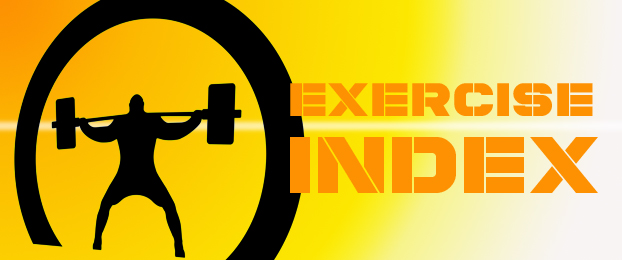
Exercise: Reverse Band Bench Press
Type: Max Effort
Muscles Targeted: Chest, Triceps
The reverse band bench press is one of the most often used max effort movements as it allows a lifter to (somewhat) mimic the experience of wearing a bench shirt. By placing the bar in bands that are attached to the top of the rack, the bar weight is lessened at the bottom of the movement. As the weight is raised, the bands help less.
So what bands should you use? The strong or average work best.
How much weight does each band take off? This is completely dependent on the height of the rack and how you've set the bands up. To determine how much weight your reverse band is taking off of the bottom of the lift, simply place the barbell in the bands. Place weight on the bar until the bar hovers around chest level. Whatever weight is on the bar at this point is approximately the amount of weight that is deloaded at the bottom portion of the movement.
Any grip can be used; close, medium or wide.
As a max effort lift, work up to a 1-3RM, making sure that you hit 3-5 lifts at 90%.
More Info:
I still remember the first time we did this movement. We set the bands up from the top of the rack so the barbell was being suspended by the bands. We used a strong Jump Stretch flex band for this. We found it took around 145 pounds for the barbell to touch our chests with a seven foot power rack.
I was excited as hell to do this. Who wouldn't be? You now have a band helping toss the weight off your chest. I was all jacked up thinking about the huge weight we'd be lifting. Then, as we worked up, something strange happened. The weight got freakin' heavy! The bands didn't help so much at lockout. Next thing we knew we had a great training device to bring up a lifter's lockout strength. This exercise has since become a staple of our training.
On some days we'll use an average band and on others a strong band. This movement became part of the great max effort mix of the floor press, board press, chain press, close-grip inclines, and rack lockouts. Our arsenal was growing and has been growing ever since the first day I stepped into the gym.
To do the reverse band bench press as a max effort movement, all you do is anchor the band around the top of your power rack, load the bar, and work up. Many lifters like to do this for 5, 3 or 1 rep maxes. What you do will depend on what works best for you.
Here's one of the 50 bench cycles I've listed in the Dynamic Bench Manual. This is one of the ways I've used the reverse band press for injury recovery and restoration.
Post Injury Phase — Reverse Band
Application: This cycle is intended for recovery and post-injury training. The weight and band should be set up so there's zero weight at the chest. You'll have three options:
1. Light band and 65 pounds
2. Average band and 95 pounds
3. Strong band and 135 pounds
This is one of the best post-injury cycles we've seen. The key to making this work is to let the band do most of the work and keep the muscle tension to a minimum. This workout should be done every bench day until your strength begins to return. This is also a great restoration workout that can be used during regular training phases at the end of the entire session.
Post Injury Training
Weeks 1-3:
2-4 times per week: 1-2 sets, 100 reps
This is to replace the regular bench training.
Restoration Training:
1 set, 100 reps
This is to be completed at the end of your workout on bench training days.
Over the past five years there has been a dynamic shift in the approach to strength and flexibility training. These bands are the reason! Don't get left behind...









